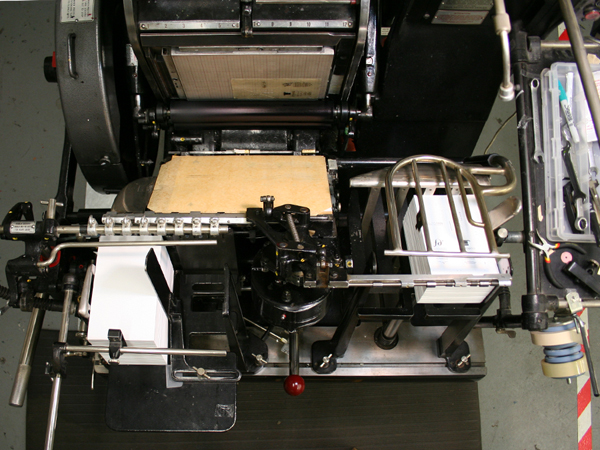In our second class we shared how our writing had been going (intermittently for most of us!), then each poet read some work out loud and we discussed our observations. Every writer’s voice was different and I’m really looking forward to seeing how these poems develop into unique chapbooks over the course of the next several weeks!
Then on to the brass tacks of the physical chapbook:
Size/Dimensions: (I’m leaning to a 5” x 6”)
Page count: a maxium of 24 pages (six folded folios of 4 pages each)
Text stock: weight (from 24lb. to 60lb.) and color (bright white, ivory, or craft brown).
Cover stock: weight (60lb., 80lb. or 100lb.), color (we looked at several examples from the Canson Mi-teints series–I was drawn to a medium blue-gray toned sample), and texture (Lisa advised against using a cover stock that had inclusions like seeds, fibers, leaves or petals and also anything too slick or reflective).
Endpapers: decorative papers inside the cover of the book.
Binding: we’re doing a pamphlet stitch binding.
Ink color:
We also talked about the design of the book, including:
Front Cover and Back Cover: Text only? Or a combination of text and image?
Front matter: which which could include some or all of the following:
Title page, acknowledgements, half title page, table of contents, frontispiece (image)
Layout: including margins, title treatment, spacing, page numbering system (number all the pages? only the right-hand pages, or left-hand pages? font for text vs. font for titles, use of upper and lower case type, italics, bold, etc.
Backmatter: Author’s note or bio, colophon, epilogue.
It really made me consider all the details we take for granted when we read a book. My head was awash in considerations about what would be best for the book that still lived mostly in my head. I pondered the examples of books that Lisa and Jennifer had brought, as well as the ones I had grabbed from my shelves at home. They were all great in their way, but none of them felt quite like the book in my head. I’m sure the book will come into focus as I gather all the information needed to move forward.
Lisa also mentioned the different aesthetics that we could bring to our books, from the refined feeling of fine arts to the rawer edge of a ‘zine. She introduced the different methods of creating our text, including the possibility of hand-writing the text and photocopying it, or working with a professional printer to print the text on a risograph machine, or making a digital file and printing it on a home computer. Each choice would influence the kinds of paper and the printing process we would choose.
She recommended that we read some of Robert Bringhurst’s book, The Elements of Typographic Style and I found his advice both comforting and poetic:
“Think of the blank page as alpine meadow, or as the purity of undifferentiated being.”
“Typographically, poise is made of white space.”
“Allow the (type)face to speak in its natural idiom.”
These words made me happy and I know I’ll feel their wisdom as I get deeper into the design of the book. For me, this chapbook by Anne Heide embodied the elegance and simplicity of Bringhurst’s ideas:

Front Cover
Then it was time to get down to the nitty gritty of writing. I did free writes based on these prompts from Dan:
Write about a place you miss.
Write a letter saying goodbye to someone.
Write a rhopalic poem.
A rhopoalic is a poem where each line is one syllable longer than the line before. It ends up growing into a triangle set on its side
A
AB
ABC
ABCD
ABCDE
ABCDEF
and so on! Such a fun puzzle. I’m working on mine at home, but check out Brenda Hillman’s poem, “Rhopalic Aubade”.
Next up: Field Trip to Logos Graphics!




